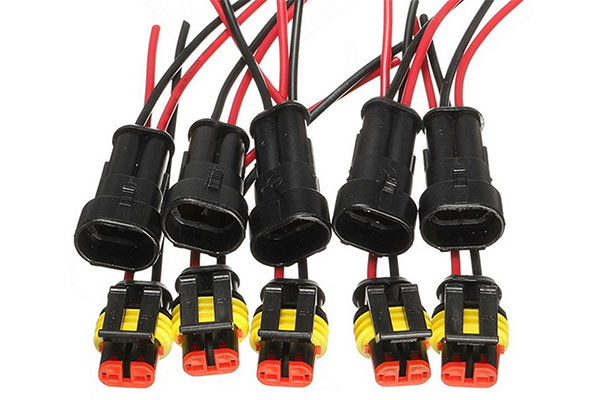The automotive industry is experiencing a profound transformation, with new energy sources, smart technologies, and connected vehicles redefining how we move. Central to this evolution is automotive connectors, the crucial components that enable seamless communication and power distribution within vehicles. In this blog, we’ll explore the differences between low-voltage and high-voltage connectors and how they shape the future of mobility.
Low-Voltage Connectors: Powering Traditional Components
Low-voltage connectors serve as the lifelines for various traditional automotive components found in both conventional and electric vehicles. These connectors are commonly employed in Battery Management Systems (BMS), air conditioning systems, lighting fixtures, and more. Traditional internal combustion engine vehicles usually operate at a standard voltage of 14V, and these connectors are well-suited to handle such power requirements.
High-Voltage Connectors: Empowering the Era of New Energy Vehicles
New Energy Vehicles (NEVs), such as electric and hybrid cars, operate on an entirely different power paradigm. The core components of NEVs, including batteries, electric motors, and electronic control systems, demand higher voltage and current levels to achieve the necessary torque and efficiency. This is where high-voltage connectors play a pivotal role.
High-voltage connectors are essential for NEVs as they enable power transfer and data at voltage levels ranging from 60V to 380V or even higher. These connectors support various applications, such as battery systems, High-Voltage Distribution Units (PDU), On-Board Chargers (OBC), DC/DC converters, air conditioning units, PTC heaters, and DC/AC charging interfaces.
High-Speed Connectors: Enabling Intelligent Connectivity
In addition to high-voltage connectors, the automotive industry is witnessing explosive growth in high-speed connectors, facilitating intelligent connectivity within vehicles and beyond. With the advent of the Internet of Things (IoT), the rise of autonomous vehicles, and the expansion of smart cities, data exchange has become a critical aspect of modern mobility.
High-speed connectors come in various types, such as FAKRA RF connectors, Mini-FAKRA connectors, High-Speed Data (HSD) connectors, and Ethernet connectors. These connectors support applications like cameras, sensors, GPS, Bluetooth, WiFi, keyless entry, infotainment systems, navigation, and driver assistance systems.
The Role of High-Voltage Connectors in Electrification
The shift towards electrification is one of the defining aspects of the automotive industry today. High-voltage connectors play a key role in this transition by enabling efficient power transfer between the battery, electric motor, and electronic control systems. Their ability to handle high voltages and currents ensures that electric vehicles deliver optimal performance and range.
High-Speed Connectors: The Backbone of Data-Driven Mobility
The era of connected vehicles brings forth unprecedented data exchange and processing. Cameras, radars, LiDARs, V2X communication, and various other sensors generate vast amounts of data that need to be transmitted, received, stored, and processed at lightning speed. High-speed connectors facilitate seamless communication between these systems, ensuring real-time data analysis for enhanced safety and performance.
Conclusion
Automotive connectors form the backbone of the modern mobility ecosystem, enabling the efficient transfer of power and data in vehicles. Low-voltage connectors continue to power traditional components, while high-voltage connectors are revolutionizing the way we view and utilize energy in New Energy Vehicles. Meanwhile, high-speed connectors propel us into an era of intelligent connectivity and data-driven mobility.
As the automotive industry continues to evolve, connectors will play a pivotal role in shaping the future of transportation. From powering electric vehicles to enabling connected and autonomous driving, these small yet essential components drive innovation and pave the way for a cleaner, safer, and smarter future on the roads.



